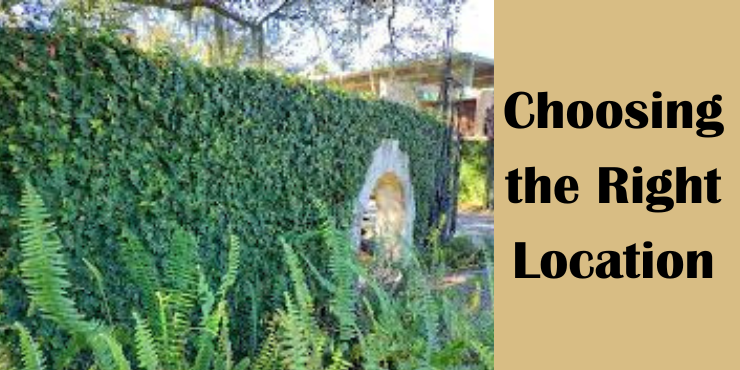If you’re looking to add a touch of natural beauty to your home or garden, creeping fig (Ficus pumila) can be an excellent choice. This evergreen vine is admired for its lush green foliage and its ability to climb and attach itself to walls, fences, and other surfaces. However, getting creeping fig to stick to a wall may require some patience and proper care. In this article, we will guide you through the process of encouraging your creeping fig to flourish and create a stunning green wall.
Table of Contents
- Understanding Creeping Fig
- Choosing the Right Location
- Preparing the Wall
- Planting Creeping Fig
- Watering and Fertilizing
- Training the Vine
- Pruning for Health and Aesthetics
- Dealing with Common Issues
- Benefits of Having Creeping Fig on Your Wall
- Creeping Fig in Home Decor
- Frequently Asked Questions (FAQs)
- Conclusion
Understanding Creeping Fig
The creeping fig wall, also known as climbing fig or wall creeper, is a hardy and versatile plant belonging to the Ficus family. It’s originally from East Asia and features small, leathery, heart-shaped leaves that are highly sought after. Its natural inclination to cling to vertical surfaces makes it an ideal choice for creating living walls or adding greenery to spaces with limited ground area.
Choosing the Right Location

It is important to carefully select the location before planting creeping figs. This plant grows best in areas with partial to full shade, so it is recommended to find a wall that receives indirect sunlight or dappled shade throughout the day. It is crucial to make sure that the surface of the wall is clean and free from debris, as it will help the vines attach more easily.
Preparing the Wall
If you want to help creeping fig attach to your wall, you can assist its attachment by setting up a trellis, wire mesh, or a similar structure. This will provide the plant with a framework to grip onto while it grows. Make sure to securely attach the support structure to the wall, ensuring it can bear the weight of the mature plant.
Planting Creeping Fig
When planting creeping figs, it is recommended to space the plants approximately 12 to 18 inches apart. Dig holes that are slightly bigger than the root balls, and ensure that the plants are planted at the same depth as they were in their containers. Thoroughly water the newly planted vines to help them establish their roots.
Watering and Fertilizing
Make sure to water creeping fig consistently to maintain moist soil. Administer water-soluble fertilizer every 4-6 weeks during active growth.
Training the Vine

As your creeping fig grows, it’s important to guide its tendrils toward the support structure you’ve provided. You can use soft ties or garden twine to gently secure the vines to the trellis or mesh. This will help the plant attach more effectively and create a uniform appearance.
Pruning for Health and Aesthetics
Regular pruning is important to maintain the health and appearance of creeping figs. Remove any dead or diseased growth and shape the plant as desired. Be careful not to prune too aggressively, as this can damage the plant.
Dealing with Common Issues
Although creeping fig is generally low-maintenance, it can still fall prey to pests such as aphids and scale insects. Make sure to inspect your plant regularly and address any infestations promptly by using insecticidal soap or neem oil as effective remedies.
Benefits of Having Creeping Fig on Your Wall
Including creeping figs on your wall can provide several benefits. It can enhance the visual appeal of your space, offer natural insulation, and even help purify the air. What’s more, it’s an eco-friendly way to create a green barrier or to camouflage unsightly walls.
Creeping Fig in Home Decor
Creeping fig is not only ideal for outdoor use but can also be a great addition to your indoor decoration. Its lush green leaves and distinct growth pattern have made it a popular choice for hanging baskets and topiaries, as well as a decorative element in your home.
Frequently Asked Questions (FAQs)
- How fast does creeping fig grow? Creeping fig typically grows moderately, adding about 1 to 2 feet of growth per year under optimal conditions.
- Can I grow creeping figs indoors? Yes, you can grow creeping figs indoors in containers or hanging baskets. Ensure it receives adequate light and humidity.
- Is creeping fig invasive? While creeping fig can be vigorous, it’s not typically considered invasive in most regions.
- How do I propagate creeping fig? You can propagate creeping figs through stem cuttings. Simply snip a healthy stem, remove the lower leaves, and plant it in a pot with well-draining soil.
- Can creeping figs damage my wall? Creeping fig is not known to damage walls; however, it’s essential to maintain and prune it regularly to prevent overgrowth.
Conclusion
Introducing creeping figs into your landscape or interior design can bring a natural and elegant touch to your space. This article provides a step-by-step guide on how to attach your creeping fig to a wall, creating a striking green backdrop that will uplift your surroundings. With proper care and attention, your creeping fig will flourish and enrich your environment with its lush and verdant foliage.


